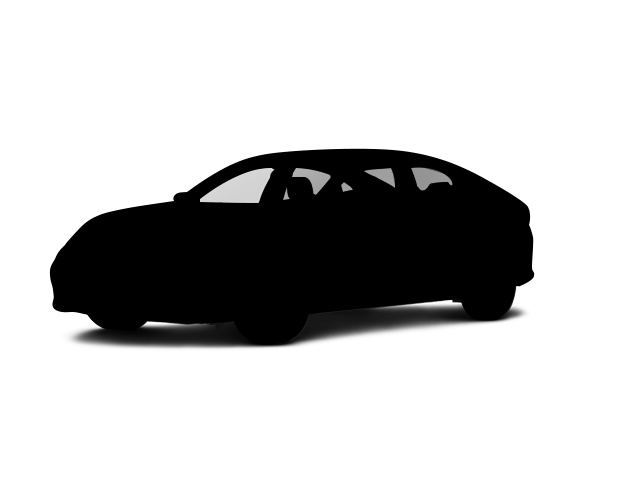Both the E-Pace and the V60 Cross Country have standard driver and passenger frontal airbags, front side-impact airbags, side-impact head airbags, front and rear seatbelt pretensioners, four-wheel antilock brakes, all wheel drive, traction control, electronic stability systems to prevent skidding, crash mitigating brakes, daytime running lights, lane departure warning systems, rearview cameras, driver alert monitors, available blind spot warning systems, around view monitors and rear cross-path warning.
Compare the2022 Jaguar E-PaceVS 2022 Volvo V60 Cross Country


Safety
Warranty
The E-Pace comes with a full 5-year/60,000-mile basic warranty, which covers the entire truck and includes 24-hour roadside assistance. The V60 Cross Country’s 4-year/50,000-mile basic warranty expires 1 year or 10,000 miles sooner.
Jaguar pays for scheduled maintenance on the E-Pace for 2 years and 24,000 miles longer than Volvo pays for maintenance for the V60 Cross Country (5/60,000 vs. 3/36,000).
Reliability
J.D. Power and Associates’ 2021 Initial Quality Study of new car owners surveyed provide the statistics that show that Jaguar vehicles are better in initial quality than Volvo vehicles. J.D. Power ranks Jaguar 19th in initial quality. With 45 more problems per 100 vehicles, Volvo is ranked 29th.
Engine
The E-Pace P250’s standard 2.0 turbo 4-cylinder produces 11 lbs.-ft. more torque (269 vs. 258) than the V60 Cross Country’s 2.0 turbo 4-cylinder. The E-Pace 300 Sport’s standard 2.0 turbo 4-cylinder hybrid produces 46 more horsepower (296 vs. 250) and 37 lbs.-ft. more torque (295 vs. 258) than the V60 Cross Country’s 2.0 turbo 4-cylinder.
As tested in Motor Trend the E-Pace P250 2.0 turbo 4-cylinder is faster than the Volvo V60 Cross Country:
|
|
E-Pace |
V60 Cross Country |
| Zero to 60 MPH |
7.8 sec |
8 sec |
| Quarter Mile |
16 sec |
16.1 sec |
Fuel Economy and Range
Regenerative brakes improve the E-Pace’s fuel efficiency by converting inertia back into energy instead of wasting it. The V60 Cross Country doesn’t offer a regenerative braking system.
Both the E-Pace and the V60 Cross Country have a standard automatic start/stop engine feature to stop unnecessary fuel waste and pollution at stop lights and heavy traffic. All E-Paces have a standard disable switch for the system, so a driver can keep the engine from shutting off when the vehicle stops temporarily. A disable switch costs extra on the V60 Cross Country.
The E-Pace has 1.8 gallons more fuel capacity than the V60 Cross Country (17.7 vs. 15.9 gallons), for longer range between fill-ups.
Environmental Friendliness
In its Green Vehicle Guide, the U.S. Environmental Protection Agency (EPA) rates the Jaguar E-Pace higher (7 out of 10) than the Volvo V60 Cross Country (5). This means the E-Pace produces up to 8 pounds less smog-producing pollutants than the V60 Cross Country every 15,000 miles.
Transmission
A nine-speed automatic is standard on the Jaguar E-Pace, for better acceleration and lower engine speed on the highway. Only an eight-speed automatic is available for the V60 Cross Country.
Brakes and Stopping
For better stopping power the E-Pace’s brake rotors are larger than those on the V60 Cross Country:
|
|
E-Pace |
V60 Cross Country |
| Front Rotors |
13.7 inches |
12.7 inches |
| Rear Rotors |
12.8 inches |
11.9 inches |
Tires and Wheels
For better traction, the E-Pace has larger standard tires than the V60 Cross Country (235/60R18 vs. 215/50R18). The E-Pace’s optional tires are larger than the largest tires available on the V60 Cross Country (245/45R21 vs. 235/45R19).
For better ride, handling and brake cooling the E-Pace offers optional 21-inch wheels. The V60 Cross Country’s largest wheels are only 20-inches.
Suspension and Handling
The front and rear suspension of the E-Pace uses coil springs for better ride, handling and control than the V60 Cross Country, which uses transverse leafs springs in the rear. Coil springs compress more progressively and offer more suspension travel for a smoother ride with less bottoming out.
The E-Pace offers an optional driver-adjustable suspension system. It allows the driver to choose between an extra-supple ride, reducing fatigue on long trips, or a sport setting, which allows maximum control for tricky roads or off-road. The V60 Cross Country’s suspension doesn’t offer adjustable shock absorbers.
Chassis
The E-Pace is 1 foot, 3.3 inches shorter than the V60 Cross Country, making the E-Pace easier to handle, maneuver and park in tight spaces.
Passenger Space
The E-Pace has 1 inch more front headroom, .2 inches more rear headroom and 1.3 inches more rear shoulder room than the V60 Cross Country.
Cargo Capacity
The E-Pace’s cargo area is larger than the V60 Cross Country’s in almost every dimension:
|
|
E-Pace |
V60 Cross Country |
| Length to seat (2nd/1st) |
31.7”/61.7” |
40.7”/71.7” |
| Max Width |
51.6” |
43.7” |
| Min Width |
41.6” |
40.9” |
| Height |
27.8” |
26.7” |
Towing
The E-Pace’s standard towing capacity is much higher than the V60 Cross Country’s (3968 vs. 2000 pounds).
Ergonomics
The E-Pace’s standard easy entry system glides the driver’s seat back, making it easier for the driver to get in and out. The V60 Cross Country doesn’t offer an easy entry system.
To quickly and conveniently keep personal devices charged without cables tangling and wearing out, the Jaguar E-Pace has a standard wireless phone charging system (Qi) in the center console. Wireless charging costs extra on the V60 Cross Country.
